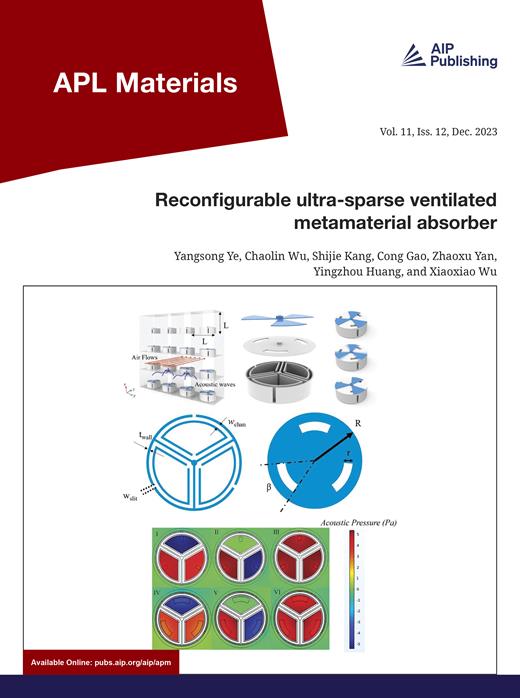Effective polysulfide control in lithium–sulfur batteries utilizing BiFeO3 nanoparticles
IF 5.3
2区 材料科学
Q2 MATERIALS SCIENCE, MULTIDISCIPLINARY
引用次数: 0
Abstract
Lithium–sulfur batteries (LiSBs) offer high energy density, cost-effectiveness, and eco-friendliness, making them promising for future energy storage. This study explores using BiFeO3 (BFO) nanoparticles (NPs) to tackle challenges such as lithium polysulfides (LiPs) and shuttle issues in LiSBs. It employs a solid-state melt diffusion technique, encapsulates sulfur in single-walled carbon nanotubes (SCNTs), and utilizes BFO for effective polysulfide control. Herein, composite cathodes of sulfur (S)/SCNTs (abbr. SCNT) were fabricated, and cells were designed using a BFO-coated separator (SCNT-BFS). In addition, a cathode modification was performed with composite S/SCNTs/BFO (SCNT-BF), and a comparative analysis was conducted to assess the effectiveness of the BFO in the separator and the cathode. Cyclic voltammetry measurements revealed that the increased current peak intensity at lower reduction potential in SCNT-BF and SCNT-BFS indicated control of higher-order LiPs (Li2Sx, where 4 ≤ x ≤ 8), resulting in the generation of more stable lower-order products (Li2S2/Li2S). The charge/discharge analysis revealed controlled LiPs, resulting in high-capacity retention in SCNT-BF (∼75%) and SCNT-BFS (∼88%) over 200 cycles, which yielded capacities of 526 and 700 mAh/g at C/8 (1C = 1675 mA/g). These promising results suggest that incorporating BFO into the cathode and separator can advance the commercialization of durable LiSBs.利用 BiFeO3 纳米粒子有效控制锂硫电池中的多硫化物
锂硫电池(LiSBs)具有能量密度高、成本效益高和生态友好的特点,因此在未来的能源存储中大有可为。本研究探讨了如何利用 BiFeO3(BFO)纳米粒子(NPs)来应对锂多硫化物(LiPs)和锂硫电池中的穿梭问题等挑战。该研究采用固态熔融扩散技术,将硫封装在单壁碳纳米管(SCNT)中,并利用 BFO 有效控制多硫化物。本文制备了硫(S)/单壁碳纳米管(SCNT)复合阴极,并设计了使用 BFO 涂层隔膜(SCNT-BFS)的电池。此外,还使用 S/SCNTs/BFO 复合材料(SCNT-BF)对阴极进行了改性,并进行了对比分析,以评估 BFO 在隔膜和阴极中的有效性。循环伏安法测量结果表明,SCNT-BF 和 SCNT-BFS 在较低还原电位下的电流峰值强度增加,表明高阶锂聚合物(Li2Sx,其中 4 ≤ x ≤ 8)受到控制,从而生成了更稳定的低阶产物(Li2S2/Li2S)。充电/放电分析表明,受控的 LiPs 使 SCNT-BF(∼75%)和 SCNT-BFS(∼88%)在 200 次循环中保持高容量,在 C/8 条件下(1C = 1675 mA/g),容量分别为 526 和 700 mAh/g。这些充满希望的结果表明,在阴极和分离器中加入 BFO 可以推动耐用锂电池的商业化。
本文章由计算机程序翻译,如有差异,请以英文原文为准。
求助全文
约1分钟内获得全文
求助全文
来源期刊

APL Materials
NANOSCIENCE & NANOTECHNOLOGYMATERIALS SCIE-MATERIALS SCIENCE, MULTIDISCIPLINARY
CiteScore
9.60
自引率
3.30%
发文量
199
审稿时长
2 months
期刊介绍:
APL Materials features original, experimental research on significant topical issues within the field of materials science. In order to highlight research at the forefront of materials science, emphasis is given to the quality and timeliness of the work. The journal considers theory or calculation when the work is particularly timely and relevant to applications.
In addition to regular articles, the journal also publishes Special Topics, which report on cutting-edge areas in materials science, such as Perovskite Solar Cells, 2D Materials, and Beyond Lithium Ion Batteries.
 求助内容:
求助内容: 应助结果提醒方式:
应助结果提醒方式:


